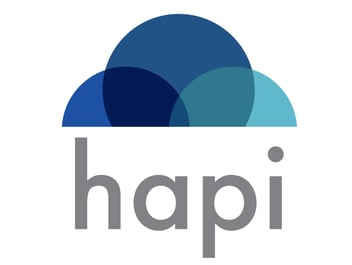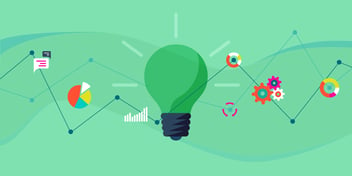Hotel Analytics Series: Why Your Reports Aren’t Analytics
Read MoreTable of Contents
In today's competitive hospitality industry, data-driven decision making is more important than ever. Hotel analytics provides valuable insights into various aspects of hotel operations, allowing hoteliers to make informed decisions and drive business growth. In this blog post, we will explore the importance of hotel analytics and the various metrics to track. We will also discuss the tools available for hotel analytics and provide tips on implementing and optimizing analytics in your hotel. So, whether you are a hotel owner, manager, or industry professional, read on to discover how hotel analytics can revolutionize your business.
Introduction to Hotel Analytics
Hotel analytics is the practice of collecting, analyzing, and interpreting data related to hotel operations and guest behavior. It involves using various tools and techniques to gain insights into key performance indicators (KPIs), customer preferences, revenue management, and overall business performance.
In this section, we will delve into the fundamental concepts of hotel analytics, providing a solid foundation for understanding its significance and how it can benefit your hotel.
What is Hotel Analytics?
Hotel analytics is a systematic approach to gathering and analyzing data from various sources within a hotel, including reservations, guest feedback, financial records, and operational data. This data is then processed and transformed into meaningful insights that can guide decision-making and drive improvements across different areas of the hotel.
The Role of Data in Hotel Analytics
Data is the cornerstone of hotel analytics. It encompasses a wide range of information, such as guest demographic data, booking patterns, revenue figures, customer feedback, and market trends. By harnessing this data, hoteliers can gain a deep understanding of their guests, operations, and market dynamics, enabling them to make data-driven decisions that enhance performance and profitability.
Benefits of Hotel Analytics
Hotel analytics offers numerous benefits to hoteliers, helping them stay competitive in a rapidly evolving industry. Some of the key advantages include:
- Improved Operational Efficiency: By analyzing data on operational processes, staffing levels, and resource allocation, hoteliers can optimize their operations, reduce costs, and improve overall efficiency.
- Enhanced Customer Experience: Hotel analytics enables hoteliers to gain insights into guest preferences, behaviors, and satisfaction levels. This information allows them to personalize services, tailor marketing efforts, and deliver exceptional guest experiences.
- Effective Pricing and Revenue Management: Hotel analytics provides insights into market demand, competitor pricing, and revenue trends. This allows hoteliers to optimize pricing strategies, identify revenue opportunities, and maximize profitability.
- Targeted Marketing and Promotions: Through data analysis, hoteliers can identify target customer segments, understand their preferences, and create targeted marketing campaigns. This helps in attracting the right guests and increasing bookings.
Key Components of Hotel Analytics
To effectively utilize hotel analytics, it is essential to understand the key components involved. These components include:
- Data Collection: This involves gathering data from various sources within the hotel, including reservations systems, property management systems (PMS), guest feedback platforms, online travel agencies (OTAs), and social media.
- Data Analysis: Once the data is collected, it needs to be analyzed using analytical tools and techniques. This analysis helps in identifying patterns, trends, and correlations that can inform decision-making.
- Reporting and Visualization: The insights gained from data analysis are presented in the form of reports, dashboards, and visualizations. This makes it easier for hoteliers to interpret the data and take action based on the findings.
- Actionable Insights: The ultimate goal of hotel analytics is to generate actionable insights that can drive improvements and business growth. These insights can be related to pricing strategies, operational efficiencies, marketing campaigns, or guest experience enhancements.
In the next sections, we will explore specific areas of hotel analytics in more detail, starting with the importance of hotel analytics in enhancing customer experience.
Importance of Hotel Analytics
Hotel analytics plays a crucial role in the success of a hotel business. In this section, we will discuss the various ways in which hotel analytics can significantly impact different aspects of hotel operations and contribute to overall success.
Enhancing Customer Experience
One of the primary benefits of hotel analytics is its ability to enhance the customer experience. By analyzing guest data and feedback, hoteliers can gain insights into guest preferences, behaviors, and satisfaction levels. This information allows them to personalize guest experiences, anticipate needs, and exceed expectations.
Hotel analytics can help identify patterns in guest preferences, such as room types, amenities, and services. This data can be utilized to customize offerings and provide personalized recommendations to guests. For example, if analytics reveal that a significant number of guests prefer rooms with a view, the hotel can prioritize allocating these rooms to guests who are likely to appreciate them the most.
Furthermore, hotel analytics can assist in identifying areas of improvement in guest satisfaction. By analyzing feedback data from surveys, online reviews, and social media, hoteliers can pinpoint specific pain points and take appropriate actions. This could involve addressing service issues, improving facilities, or training staff to deliver exceptional customer service.
By leveraging hotel analytics to enhance the customer experience, hotels can build loyalty, increase guest satisfaction, and drive positive word-of-mouth referrals, leading to repeat bookings and a competitive edge in the market.
Improving Operational Efficiency
Hotel analytics is instrumental in optimizing operational efficiency within a hotel. By analyzing data related to operational processes, staffing levels, and resource allocation, hoteliers can identify bottlenecks, streamline operations, and reduce costs.
For instance, analytics can help identify peak and off-peak periods, allowing hotels to adjust staffing levels accordingly. By aligning workforce scheduling with occupancy trends, hotels can avoid overstaffing during slow periods and understaffing during busy times, leading to better resource utilization and cost savings.
Additionally, hotel analytics can provide insights into operational inefficiencies and areas for improvement. By analyzing data on guest complaints, maintenance requests, and service delays, hoteliers can identify recurring issues and take corrective actions. This could involve implementing staff training programs, upgrading equipment, or reevaluating operational procedures to enhance efficiency and guest satisfaction.
By leveraging hotel analytics to improve operational efficiency, hotels can streamline processes, reduce costs, and allocate resources more effectively, ultimately leading to improved profitability.
Pricing and Revenue Management
Hotel analytics plays a significant role in pricing and revenue management strategies. By analyzing market data, competitor pricing, and demand patterns, hoteliers can optimize pricing strategies and maximize revenue potential.
Analytics can provide insights into pricing trends, allowing hotels to adjust rates based on market demand. For example, if analytics reveal high demand during certain periods, hotels can implement dynamic pricing strategies to increase rates and maximize revenue. Conversely, during low-demand periods, hotels can offer promotional rates or packages to attract more bookings and maintain occupancy levels.
Furthermore, hotel analytics can assist in identifying revenue opportunities through upselling and cross-selling. By analyzing guest spending patterns and preferences, hotels can tailor their offerings and promotions to upsell higher-priced room categories, additional services, or amenities. This can lead to increased revenue per guest and overall profitability.
Ultimately, hotel analytics empowers hoteliers to make data-driven pricing decisions, optimize revenue management strategies, and maximize profitability in a competitive market.
Marketing and Promotions
Hotel analytics is invaluable in guiding marketing and promotional efforts. By analyzing guest data, market trends, and campaign performance, hoteliers can develop targeted marketing strategies that resonate with the desired customer segments.
Analytics can provide insights into guest demographics, preferences, and booking patterns. This information can be used to create personalized marketing campaigns that appeal to specific guest segments. For example, if analytics reveal that a significant portion of guests are families, hotels can tailor marketing messages and promotions to highlight family-friendly amenities, nearby attractions, and special offers for children.
Additionally, hotel analytics can measure the effectiveness of marketing campaigns by tracking key performance indicators (KPIs) such as click-through rates, conversion rates, and return on investment (ROI). This allows hoteliers to identify successful campaigns and allocate resources to the most effective marketing channels.
Moreover, analytics can help hotels identify potential partnership opportunities by analyzing guest data and identifying complementary brands or services that align with their target market. By forming strategic partnerships, hotels can expand their reach, tap into new customer segments, and increase brand awareness.
By leveraging hotel analytics for marketing and promotions, hotels can optimize their marketing efforts, increase brand visibility, attract the right customers, and drive bookings.
In the next section, we will explore the key metrics that hoteliers should track in hotel analytics to measure performance and make data-driven decisions.
Metrics to Track in Hotel Analytics
Tracking key metrics is essential in hotel analytics as it provides hoteliers with valuable insights into the performance and health of their hotel. In this section, we will discuss some of the crucial metrics that hoteliers should track to measure performance and make data-driven decisions.
Occupancy Rate
Occupancy rate is a fundamental metric in the hotel industry, representing the percentage of rooms occupied over a specific period. It is calculated by dividing the number of occupied rooms by the total number of available rooms and multiplying by 100.
Tracking occupancy rate helps hoteliers understand the demand for their rooms and measure the effectiveness of their marketing and revenue management strategies. A higher occupancy rate indicates a higher utilization of available rooms and suggests that the hotel is attracting and retaining guests effectively.
Average Daily Rate (ADR)
Average Daily Rate (ADR) measures the average price per room sold in a hotel over a given period. It is calculated by dividing the total room revenue by the number of rooms sold. ADR is an important metric as it provides insights into the pricing strategy and the revenue generated per room.
Monitoring ADR helps hoteliers evaluate the effectiveness of their pricing strategies and identify opportunities for rate optimization. By analyzing ADR trends, hotels can adjust their rates based on factors such as seasonality, demand fluctuations, and market conditions to maximize revenue.
Revenue Per Available Room (RevPAR)
Revenue Per Available Room (RevPAR) is a key metric that combines both occupancy rate and ADR to provide a comprehensive view of a hotel's revenue performance. It is calculated by multiplying the occupancy rate by the ADR.
RevPAR is a critical metric as it measures the revenue generated per available room and provides a snapshot of a hotel's overall revenue performance. By tracking RevPAR, hoteliers can assess their competitiveness in the market and make informed decisions regarding pricing, marketing, and revenue management strategies.
Customer Satisfaction Score (CSS)
Customer Satisfaction Score (CSS) is a metric that evaluates guest satisfaction based on feedback and surveys. It provides insights into the guest experience, service quality, and overall satisfaction levels.
CSS can be measured through various means, including post-stay surveys, online reviews, and feedback platforms. By tracking CSS, hoteliers can identify areas for improvement, address guest concerns, and enhance the overall guest experience. A high CSS indicates satisfied guests who are more likely to become repeat customers and recommend the hotel to others.
Revenue Generated by Source
Tracking revenue generated by different sources is crucial for understanding the effectiveness of marketing and distribution channels. By analyzing revenue from sources such as direct bookings, online travel agencies (OTAs), corporate contracts, and other distribution channels, hoteliers can evaluate the performance of each channel and allocate resources accordingly.
This metric helps hoteliers identify revenue opportunities and optimize their marketing and distribution strategies. For example, if a significant portion of revenue is generated through direct bookings, hotels can focus on enhancing their website, implementing direct booking incentives, and improving their online presence to drive more direct bookings and reduce reliance on OTAs.
By tracking these key metrics in hotel analytics, hoteliers can gain valuable insights into their performance, identify areas for improvement, and make data-driven decisions to optimize revenue, maximize occupancy, and enhance guest satisfaction. In the next section, we will explore the tools available for hotel analytics that can assist in collecting and analyzing data effectively.
Tools for Hotel Analytics
Utilizing the right tools is essential for effective hotel analytics. In this section, we will explore some of the key tools available to hoteliers that can assist in collecting, analyzing, and interpreting data for hotel analytics purposes.
Property Management Systems (PMS)
A Property Management System (PMS) is a software application that helps hotels manage their daily operations, including reservations, guest check-ins and check-outs, room assignments, billing, and more. PMSs are not only crucial for operational efficiency but also serve as a valuable source of data for hotel analytics.
Modern PMSs often come with built-in reporting and analytics capabilities, allowing hoteliers to extract valuable insights from the data stored in the system. These insights can include occupancy rates, revenue figures, guest demographics, and booking patterns. By leveraging PMS data, hoteliers can make data-driven decisions related to revenue management, guest experience, and operational improvements.
Customer Relationship Management (CRM) Tools
Customer Relationship Management (CRM) tools are designed to manage and analyze customer interactions and data. In the context of hotel analytics, CRM tools can be used to collect and store guest data, track guest preferences and behaviors, and facilitate personalized marketing and guest engagement strategies.
CRM tools enable hoteliers to build a comprehensive profile of each guest, including their preferences, previous stays, purchase history, and more. By analyzing this data, hoteliers can segment their customer base, target specific guest segments with personalized marketing campaigns, and deliver tailored experiences that meet individual guest needs.
CRM tools also facilitate guest communication and feedback management, allowing hotels to capture guest feedback, address concerns, and monitor guest satisfaction. By leveraging CRM tools, hotels can build strong customer relationships, drive guest loyalty, and enhance the overall guest experience.
Revenue Management Software
Revenue Management Software (RMS) is specifically designed to assist hotels in optimizing pricing and revenue strategies. These tools utilize advanced algorithms and data analysis techniques to forecast demand, recommend optimal pricing strategies, and maximize revenue potential.
RMS tools consider various factors such as historical data, market trends, competitor pricing, and demand patterns to provide accurate revenue forecasts and pricing recommendations. By leveraging RMS tools, hoteliers can make informed decisions about pricing adjustments, promotional offers, and revenue optimization strategies.
Furthermore, RMS tools often integrate with other hotel systems, such as PMS and distribution channels, allowing for seamless data flow and real-time updates. This integration enables hoteliers to automate pricing updates, monitor competitor rates, and adjust pricing strategies based on market dynamics.
Guest Feedback Tools
Guest feedback tools are essential for understanding guest satisfaction, identifying areas for improvement, and monitoring the success of guest experience initiatives. These tools can include online survey platforms, social listening tools, and reputation management systems.
Guest feedback tools enable hotels to gather and analyze feedback from various sources, such as post-stay surveys, online reviews, and social media mentions. By collecting and analyzing this feedback, hoteliers can gain insights into guest preferences, identify service gaps, and address potential issues promptly.
These tools also provide sentiment analysis, allowing hoteliers to gauge guest satisfaction levels and identify trends in guest feedback. By monitoring and analyzing guest feedback, hotels can make data-driven decisions to improve service quality, implement training programs, and enhance the overall guest experience.
By utilizing these tools for hotel analytics, hoteliers can collect, analyze, and interpret data effectively, enabling them to make informed decisions, optimize operations, and drive business growth. In the next section, we will discuss the process of implementing and optimizing hotel analytics in a hotel setting.
Implementing and Optimizing Hotel Analytics
Implementing and optimizing hotel analytics is a continuous process that involves collecting and analyzing data, developing actionable insights, executing changes, and continuously monitoring performance. In this section, we will explore the key steps involved in implementing and optimizing hotel analytics to maximize its effectiveness and impact on a hotel's operations and profitability.
Collecting and Analyzing Data
The first step in implementing hotel analytics is to establish a robust data collection system. This involves identifying the relevant data sources, such as PMS, CRM tools, guest feedback platforms, and revenue management systems, and ensuring they are integrated to facilitate seamless data flow.
Once the data collection system is in place, hoteliers need to define the key metrics and KPIs they want to track. This could include occupancy rate, ADR, RevPAR, CSS, revenue by source, and more. By clearly defining the metrics, hoteliers can ensure consistency in data collection and analysis.
Hoteliers should also establish a process for data cleaning and validation to ensure data accuracy and reliability. This involves reviewing data for inconsistencies, duplicates, and errors and resolving any issues that may arise.
After collecting the data, the next step is to analyze it using appropriate analytical tools and techniques. This could involve using data visualization tools, statistical analysis software, or hiring data analysts to extract insights and identify patterns, trends, and correlations in the data.
Developing Actionable Insights
Once the data has been analyzed, the next step is to develop actionable insights from the findings. Hoteliers should interpret the data in the context of their business goals and objectives. For example, if the data reveals a decline in RevPAR, hoteliers can investigate the possible causes and develop strategies to address the issue.
It is important to involve key stakeholders, such as department heads and managers, in the interpretation of the data to ensure a holistic understanding of the insights. This collaboration can lead to more effective decision-making and implementation of changes.
Executing and Monitoring Changes
After developing actionable insights, the next step is to execute changes based on the findings. This could involve implementing new pricing strategies, optimizing operational processes, enhancing customer service training, or launching targeted marketing campaigns.
During the implementation phase, it is crucial to closely monitor the impact of the changes and measure their effectiveness. This can be done by tracking the identified metrics and KPIs on an ongoing basis. Regular monitoring allows hoteliers to assess the success of the implemented changes and make necessary adjustments if needed.
Continuous Improvement
Hotel analytics is an ongoing process of continuous improvement. It is important for hoteliers to regularly review and reassess their data collection methods, analytical techniques, and strategies to ensure they remain relevant and effective.
By continuously analyzing data, monitoring performance, and adapting strategies, hoteliers can stay ahead of market trends, identify new revenue opportunities, and enhance the overall guest experience.
In conclusion, implementing and optimizing hotel analytics involves collecting and analyzing data, developing actionable insights, executing changes, and monitoring performance. By following these steps and embracing a data-driven approach, hoteliers can leverage hotel analytics to make informed decisions, drive operational efficiencies, enhance guest satisfaction, and ultimately achieve business success.
%20(1).png?width=400&height=124&name=21051_HotelIQ_logo_BJ_PB_DM_GR-05%20(1)%20(1).png)




Comments